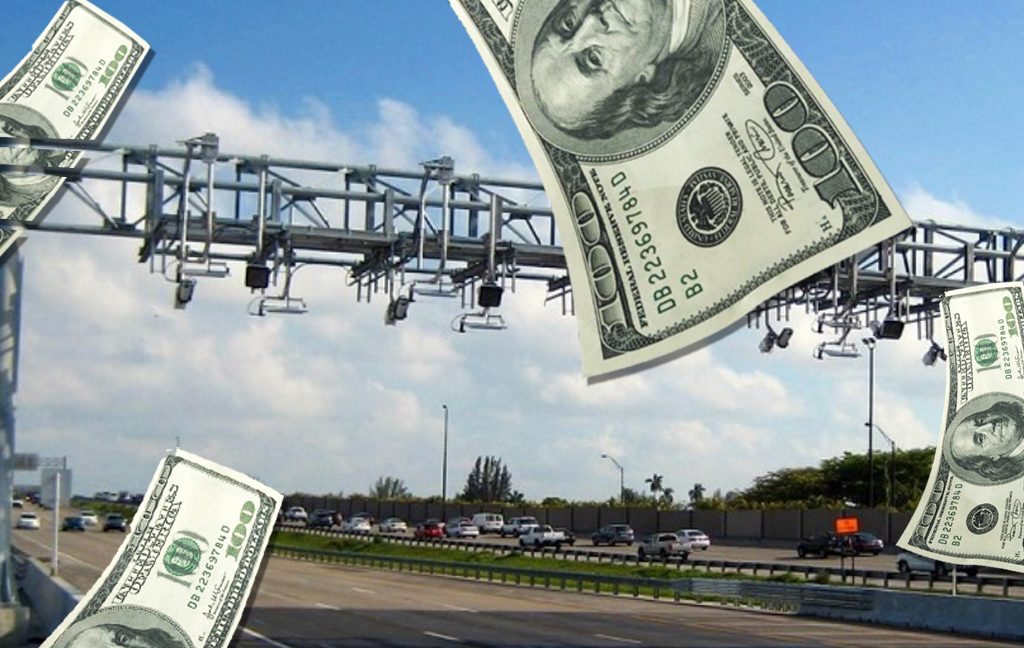Memo to MTA: Brag less, bag more.
Yes, it’s awesome that in a three-day sting last week, Metropolitan Transportation Authority cops nabbed 44 autos that combined had racked up $922,500 in unpaid Verrazzano-Narrows Bridge tolls and fines.
Over the last 3 days, officers on the Verrazzano-Narrows Bridge interdicted 44 vehicles of persistent toll violators.
— MTA (@MTA) December 15, 2023
Combined, these scofflaws owed nearly $1M in unpaid tolls and fees.
In 2023 alone, officers have interdicted over 2,700 vehicles that owe unpaid tolls and fees. pic.twitter.com/YXboJhIGwy
Welcome though they are, it's worth noting that those tolls and fines comprise less than the tolls evaded on all MTA bridges and tunnels every three days!
Yes, based on MTA data, every three days in 2022, the Authority lost out on nearly $1.3 million in toll revenue owed by non-paying vehicle owners on its nine crossings. That revenue loss is 40 percent more than the $922,500 in tolls (and, importantly, the much larger fines that are levied when drivers don't pay the toll) that the MTA says were racked up by the 44 vehicles it stopped on the Verrazzano last week.
How can that be? Do the math:
- In 2022, the MTA collected $2,332,380,000 at its toll crossings (source: Stantec Consulting Services, “Appendix E: History and Projections of Traffic, Toll Revenues and Expenses and Review of Physical Conditions of the Facilities of Triborough Bridge and Tunnel Authority,” April 28, 2023, Table 6.)
- That year, the MTA reported at the Nov. 29 Bridges & Tunnels Committee meeting that its “toll revenue collection rate” is 93.7 percent.
- That makes the uncollected 2022 revenue $156,800,000 (calculated by multiplying the first dollar figure by the reciprocal of the collection percentage less one).
- Then take that number and divide it by 365 to get the per-day figure and then multiply by three to get the three-day sum, and the result is $1,290,000.
- And that $1,290,000 is 40 percent more than $922,500 (and that's not even taking into account that the $922,500 includes fees, not just tolls).
So, MTA bridge toll evasion is rampant. Why should we care? Two big reasons:
First, toll evasion is pinching our public transportation. Every dollar of surplus MTA toll revenue goes directly to the region’s public transit providers: 50 percent to NYC Transit, 25 percent each to Metro-North and the Long Island Rail Road. Last year’s $156.8 million in uncollected tolls thus represent $78 million-plus denied to NYCT and $39 million each missed by the commuter rail lines — money that could have paid for more frequent train service.
Second, and more urgent, toll avoidance by area motorists threatens to undermine congestion pricing. For each 1 percent of non-paying private cars and trucks, congestion revenues will shrink by $10 million. The difference between a “nominal” 2-percent non-paying share and, say, the 2022 average 6.3-percent rate, is more than $40 million in annual revenue that won’t be available to fund transit improvements.
But consider this, too: congestion pricing is a novel concept here. Unlike tolls on MTA bridges and tunnels, a fee to drive into Manhattan south of 60th Street isn’t a means of recouping a capital outlay for a bridge or tunnel. Rather, it’s a means to offset (or “internalize”) externality costs caused by driving into a chronically over-subscribed network of streets and roads, and, in so doing, to dissuade a minority of motorists from undertaking those vehicle trips.
Any such innovative policy depends on a modicum of social cohesion. A 2-percent rate of toll avoidance is manageably low, as MTA chair Janno Lieber intimated when discussing the enforcement blitz with reporters. In contrast, the 6.3-percent average rate from late 2021 into most of 2022 practically invites law-abiding motorists to go rogue.
Just such a slippery slope is evident on subways and especially buses, as MTA detractors and congestion pricing opponents never tire of pointing out, highlighting what they deem a half-a-billion dollars or more in lost transit revenues from fare-beating. Of course, those tropes overstate the revenue losses by ignoring that many fare-beaten trips wouldn’t be made at all if they weren’t “free.”
Congestion pricing is a different beast. The public will gain whether car trips to the zone continue (which generates revenue) or not (which cuts traffic congestion). But this outcome depends on drivers actually facing the toll.
So, let's go, Janno. Make sure the big toll-evader bust isn't a three-hit wonder.






